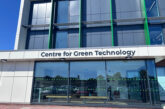
With fire safety still high on the agenda in the wake of the Grenfell Tower tragedy, Tim Benstead (Benstead Associates) in association with Trade-Docs, explains why a focus on ‘behaviour’ (when considering individual competence) will have positive implications for the electrical installation sector.
Whenever a significant tragedy occurs, it’s right that Government instigates a review of what happened – what were the reasons for the tragedy, what should be learned as a consequence, and what changes must occur to practice and culture?
Dame Judith Hackitt issued an interim report in December 2018 and addressed a series of shortcomings of the construction industry, building owners, regulators and Government in relation to high rise residential buildings (HRRBs). These shortcomings were:
– A need for a culture change, with industry taking greater responsibility for what is built,
– The current system in place for ensuring fire safety in high-rise buildings is not fit for purpose,
– A clear, quick and effective route for residents to raise concerns and be listened to must be created.
This article isn’t about HRRBs specifically, but will consider the first of these shortcomings – a need for a culture change – as it relates to the general culture within the building industry.
Building a safer future
The final report from Hackitt (Building a Safer Future – Independent Review of Building Regulations & Fire Safety) highlights certain key issues that underpin the system failure within HRRBs and complex buildings that led to Grenfell. There are, however, lessons that can be applied to all dwellings.
A culture change cannot happen within one area of the building industry and not spread further afield. A typical dwelling may not fall within the remit of the Hackitt report, but those working within HRRBs will also be working, at times, in other types of dwelling.
What lessons can be learned that will make all dwellings safer and avoid the ‘race to the bottom’ that too often occurs? The report highlights those things that work against good practice. These are as applicable, to a greater or lesser extent, to single dwellings as well as HRRBs and complex buildings:
Ignorance
Regulations, standards and guidance exist that are, too often, not read and/or not properly understood by those who are involved with the design, installation, certification or maintenance of the system.
Indifference
For many businesses and individuals, the ‘race to the bottom’ in terms of cost and quality is apparent. Certain people seem to believe that a standard is a maximum, something to aspire to, rather than a minimum expectation. The questions are often: ‘How quickly can things be done?’ or ‘How cheap can this be?’ This will, of necessity, impact upon the safety and quality of dwellings.
Lack of clarity of roles
Where does the responsibility for aspects of the design, installation, commissioning and maintenance lie? This lack of clarity is exacerbated by the level of fragmentation within the industry. Who is accountable?
Regulatory oversight
There’s inadequate regulatory oversight and rarely are companies or individuals prosecuted.
Based on these issues, a Competence Steering Group was created and has worked across the industry in creating an overarching system for setting and overseeing standards of competence as they relate to fire safety.
Setting the bar
The ‘Setting the bar’ report is a response to the Hackitt report and seeks to answer the challenges raised regarding the lack of consistency in assuring the skills, knowledge, experience and behaviours of those working in HRRBs. The report was borne out of work carried out by a number of working groups, populated by people from across industry.
As stated earlier, to look only at those parts of the industry that work within the HRRB sector, and only require the levels of competence to apply to them, is to fail to learn the lessons that Hackitt highlights. The industry must look for maximum application, not minimum expectation. Therefore, the lessons learned will be applicable across the wider industry.
Working group 2 considered the competence of installers as it relates to buildings’ overall fire safety strategy. The recommendations detailed for installers are:
– The industry should adopt a framework for all sectors and the framework should consist of:
− Accredited third party certification of companies
− Level 2/3 qualification for all individuals
− A card scheme
− Regular CPD to demonstrate ongoing training and personal development
− All installers to have core knowledge of fire safety in buildings, with standardised, mandatory training
– Those installer sectors that currently don’t have the above must develop such a framework
– Standardised terminology across the sector
– Industry-wide CPD refresher training programme(s)
– Ongoing work for the working group exploring competence systems for designers and task supervisors.
The issue here is that the recommendations of the report dealing with the work of Working group 2 doesn’t address behaviours. What is it that makes a properly trained, adequately skilled, ‘competent’ person fail to do that which they know to be right in a particular circumstance?
 Built environment – overarching framework for competence of individuals
Built environment – overarching framework for competence of individuals
The British Standards Institute (BSI) has instigated a proposed framework for competence in a draft standard, BS 8670. This ‘standard’ is only in draft form and subject to significant change, no doubt; however, it’s clear that a serious attempt is being made to address certain core issues.
The core objectives currently highlighted are:
– To drive adoption of more consistent good practice in development and use of competence testing across the built environment,
– To enable consistent and objective assessment of different sector-specific competence frameworks against common criteria by regulators, clients and employers, and
– To enable requirements to be set for behavioural competence and building safety to drive improvements in culture and competence for all those working in the built environment.
The draft standard goes on to describe specific objectives and core requirements. It also highlights specific behavioural competencies to be included within any definition of technical competence.
There’s a clear recognition within BS 8670 that an understanding of behaviour is part of the necessary mix when considering competence and, without that, a culture change won’t happen.
Conclusion
Over the next few years, all sectors of the building industry will be forced to address all aspects of competence, including technical knowledge and skills, experience, and behaviours.
It is the last of these that will receive the most attention.
Get more details on Trade-Docs’ new publication, Everything You Need To Know About Grade-D Fire Alarm & Fire Detection Systems, by clicking here








